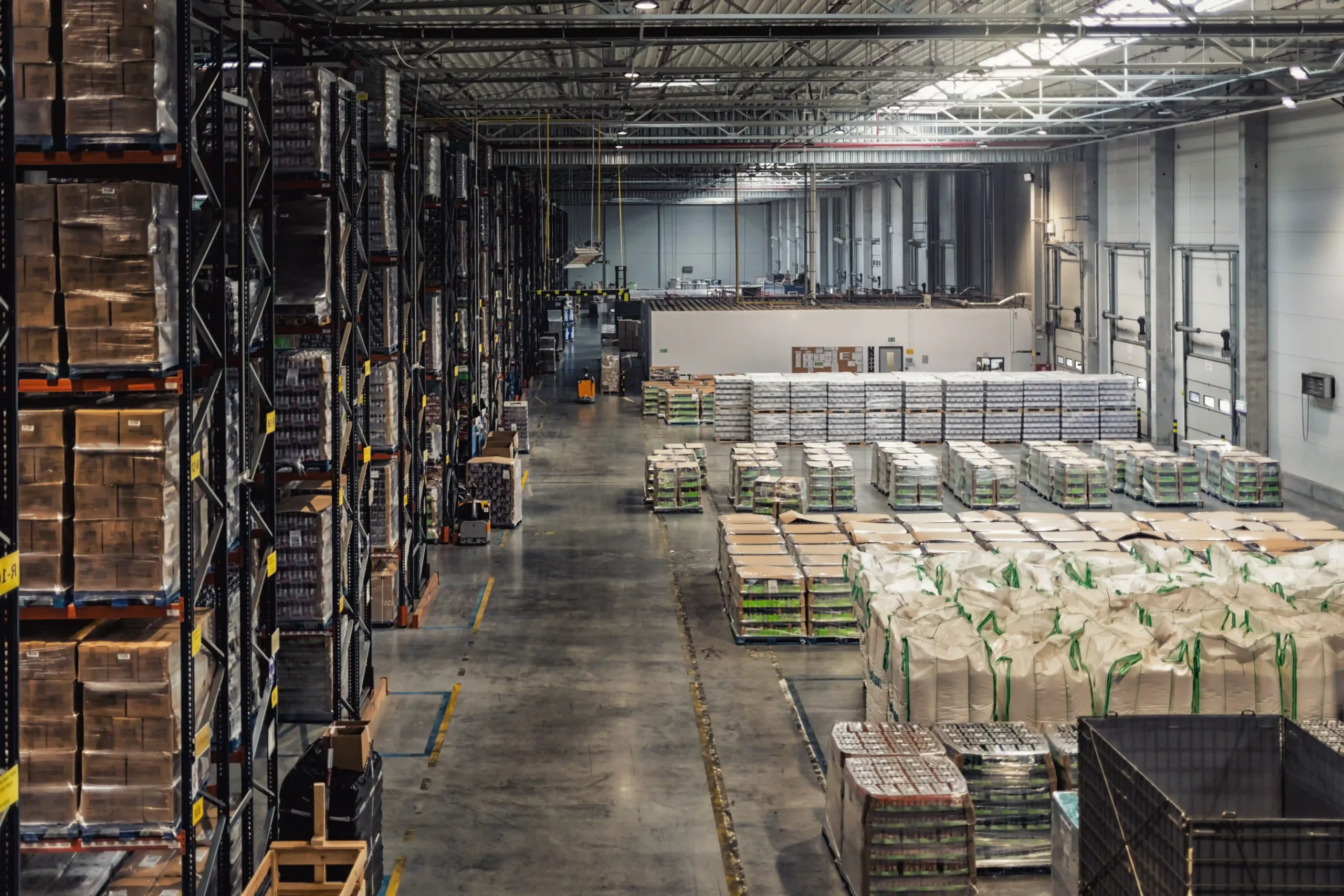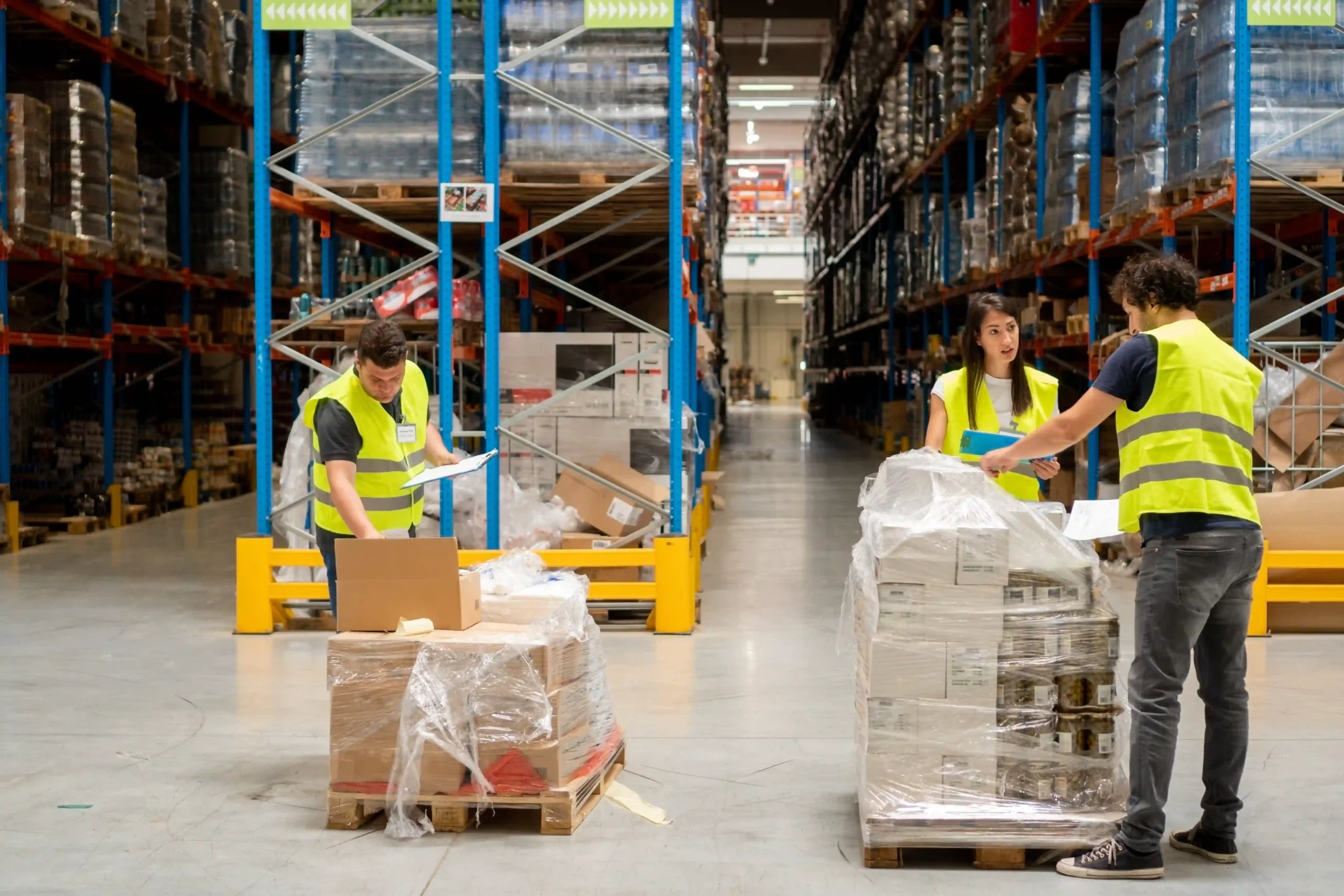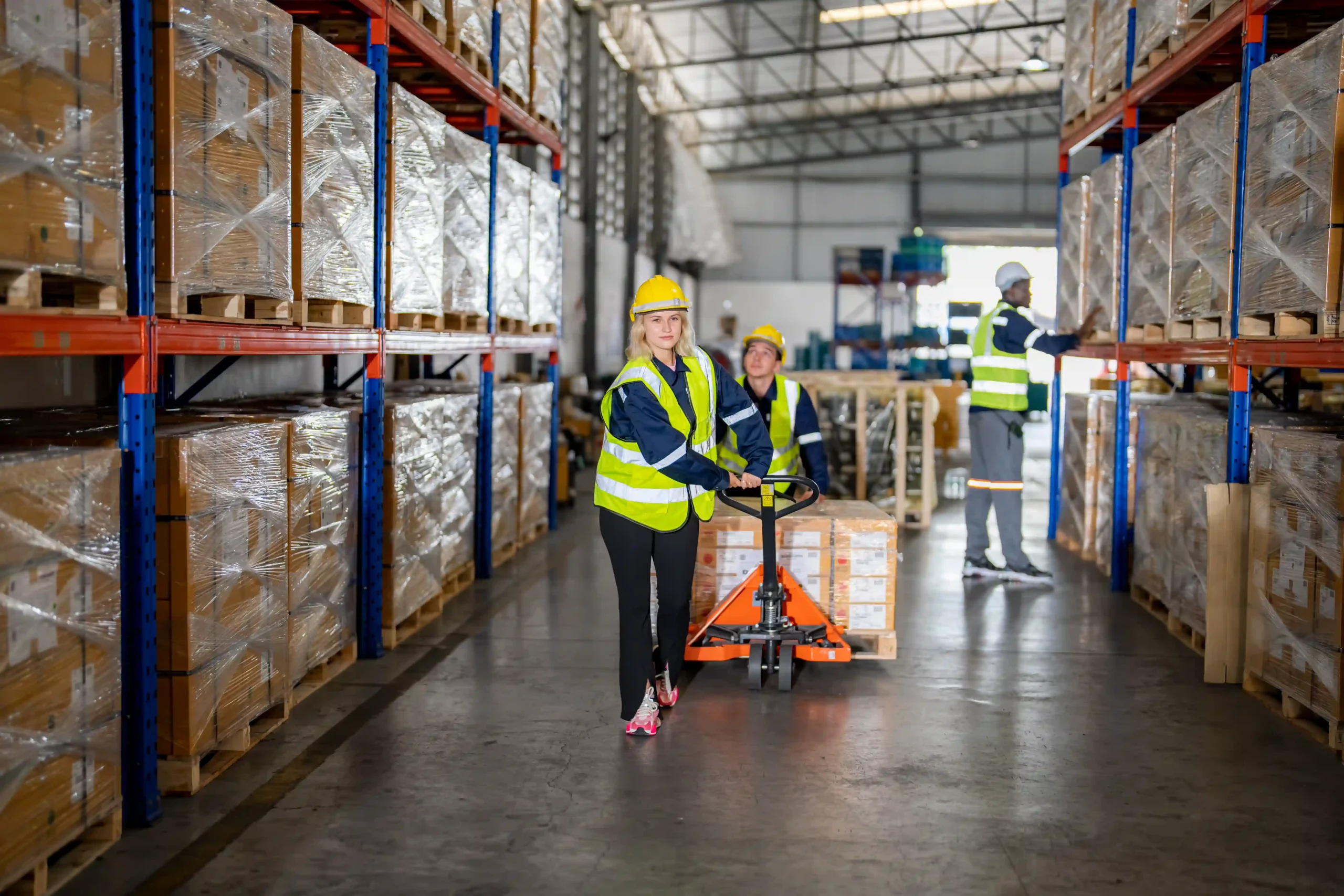To put it simply, warehouse logistics means planning, managing, and optimizing how products and information flow inside a warehouse. That might sound basic, but in practice, it’s anything but. When I first started in the logistics business decades ago, the term “warehouse logistics” didn’t carry the same weight it does today.
It was mostly about storage. But now, it’s about speed, accuracy, and customer experience—all of which are deeply affected by how your warehouse functions.
At Tri-Link FTZ, we define warehouse logistics as the detailed coordination of physical goods (like pallets, cartons, and inventory) and digital information (like fulfillment data, picking lists, and order tracking) to ensure warehouse operations are smooth and scalable. It covers everything from how inventory is received, stored, and picked to how it’s shipped out and returned.
When you get it right, you reduce costs, speed up deliveries, and build a supply chain that works like clockwork.

Over the years, I’ve seen clients bleed money simply because they underestimated the role of warehouse logistics in their supply chain. Whether you’re a small distributor or a multinational importer, the efficiency of your warehouse can make or break your entire operation.
When a warehouse runs well, shipments go out faster, inventory is more accurate, and customers are happier. When it doesn’t, orders get delayed, errors multiply, and reputations suffer.
At Tri-Link FTZ, we’ve helped our clients shrink fulfillment times by up to 42%, just by improving how their warehouse logistics systems were set up. This includes integrating smart warehouse management software, redesigning floor layouts, and training staff on optimized workflows.
From inbound shipping to final delivery, warehouse logistics serves as the central node of the supply chain—and when it’s neglected, everything downstream suffers. Read more here.
Warehouse logistics isn’t just about stacking boxes and checking off clipboards. The core functions are both physical and digital—and each one has to work in harmony.
One key role is inventory management. Knowing what you have, where it is, and how quickly it’s moving is foundational. This ties directly into order fulfillment, where accuracy is non-negotiable.
If a customer orders ten items and gets nine, that’s not just a loss—it’s a breakdown in trust. Another function is receiving and putaway, which includes inspecting shipments and placing them in optimal storage locations.
The smarter the placement, the faster your pickers can retrieve items. Then there’s picking and packing, where workers use handheld devices or even autonomous carts to select and bundle orders.
Add to this returns management, which has become a logistics discipline of its own, especially in the age of eCommerce. And finally, compliance and reporting are critical, particularly in FTZ operations like ours, where customs tracking and audit trails are a part of daily operations.
Now let’s get real for a moment. Running a warehouse isn’t a walk in the park.
I’ve walked into warehouses where inventory was spread across four buildings with zero digital tracking. That’s a recipe for chaos.
One of the biggest challenges is space mismanagement. A poorly laid-out warehouse forces workers to zigzag unnecessarily, wasting time and increasing fatigue.
We recently reconfigured a client’s layout and saved them the equivalent of 1,800 walking hours per year. Another challenge is training.
Many companies invest in software but skip proper onboarding. If your team doesn’t know how to use your WMS (Warehouse Management System), it’s like giving a Ferrari to someone who’s never driven a stick.
Then there’s seasonal volatility, where demand spikes overwhelm staff and systems. And of course, returns and damages—these create friction, drain time, and kill customer satisfaction.
Addressing these requires proactive planning, staff coordination, and a logistics mindset that adapts, not reacts.

Warehouse layout might sound like an architectural decision, but it’s a logistics strategy. I’ve helped companies shave minutes off every single order just by adjusting how their aisles and zones are arranged.
In warehouse logistics, every second counts. Placing your fast-moving SKUs near the front of the warehouse or adjacent to packing stations can significantly reduce picking time.
We also look at vertical optimization. Are you using your vertical racking effectively, or is valuable airspace going to waste?
What about safety and access paths? We’ve worked with clients where forklifts had to reverse through blind corners—something we corrected quickly with a new traffic flow design.
Good layout reduces travel time, improves safety, and supports scalable growth.
Technology is one of the biggest game-changers in warehouse logistics today. We use a mix of WMS platforms, mobile scanning tools, and even RFID technology to streamline operations.
These systems do more than just track goods—they help with labor forecasting, auto-replenishment, and even real-time data visualization. For example, one of our clients now uses a tablet-based system where team leads can monitor picking speed, pending orders, and error rates from anywhere in the warehouse.
We’re also seeing increasing adoption of automation, like conveyor belts and robotic sorting arms. While not every business is ready to jump into full automation, there’s value in starting small—think barcode scanners or automated weight checks.
And let’s not forget IoT sensors. We’re testing sensor systems that detect temperature changes or unusual vibrations, which could signal spoilage or potential equipment issues before they happen.
One of the most common misconceptions I run into is that warehouse logistics is only for big companies. That couldn’t be further from the truth.
In fact, I’d argue that small and mid-sized businesses stand to gain the most from getting logistics right early on. You don’t need a million-square-foot facility to see the benefits.
Even modest improvements in layout, inventory control, or employee scheduling can lead to double-digit gains in efficiency. At Tri-Link FTZ, we’ve worked with startups who were still fulfilling orders out of their garage.
We helped them put in place scalable processes that carried over when they moved into their first warehouse. For growing companies, things like barcode scanning, simple WMS software, and even color-coded bin systems can make a world of difference.
These tools level the playing field and let smaller players compete on speed, accuracy, and reliability—all of which are driven by warehouse logistics. By focusing on warehouse logistics meaning as it applies to your unique operation, you’re laying the foundation for long-term success.
Logistics isn’t just a back-end function—it’s a growth engine. Read more here.

Let’s shift gears and talk about customers. Because no matter how efficient your warehouse is, none of it matters if the customer has a poor experience.
Think about it—late shipments, missing items, or damaged packages can erase months of good branding with a single transaction gone wrong. The good news is that a solid warehouse logistics strategy reduces these risks dramatically.
When your inventory is accurate and your picking process is precise, you get the right item to the right person at the right time. That sounds simple, but it’s the core promise every customer wants fulfilled.
We’ve implemented systems for clients that cut return rates by over 30%, just by improving warehouse workflows and accountability. Customers today expect fast shipping and real-time updates.
That’s only possible when your warehouse logistics are synced with your order management systems. We use integrated dashboards that provide live tracking from the moment an item is picked to the moment it ships out.
It’s seamless for the customer—and that builds trust, loyalty, and repeat business.
Over three decades in this business have taught me that there’s no one-size-fits-all solution. But there are best practices that we’ve seen work time and time again.
First, train your team—and not just once. Ongoing training ensures that everyone from the receiving dock to the packing station knows what’s expected and how to use your tools.
Second, make data your ally. Run regular cycle counts to ensure inventory accuracy.
Keep an eye on KPIs like order accuracy rate, average fulfillment time, and warehouse utilization. These metrics will show you where the gaps are and where you’re doing well.
We also recommend implementing standardized procedures for everything: receiving, picking, packing, returns. This reduces guesswork and improves speed.
Another smart move? Build collaborative relationships with your suppliers and carriers.
Knowing when trucks will arrive, what they’re carrying, and how they’ll be unloaded lets you staff accordingly and avoid bottlenecks. And finally, optimize continuously.
Logistics isn’t static—products change, people change, systems change. Your warehouse strategy needs to evolve too.
This is one of the biggest decisions a business will face as it grows. At Tri-Link FTZ, we work with a lot of companies that hit a crossroads—do we invest in building out our own warehouse logistics infrastructure, or do we outsource to a third-party logistics provider like us?
The answer depends on your business model, growth rate, and goals. Outsourcing gives you immediate access to experienced staff, systems, and infrastructure.
It reduces your overhead, accelerates shipping times, and often improves customer satisfaction right away. For example, our Foreign Trade Zone (FTZ) solutions allow importers to defer or eliminate duties, which can be a game-changer for international brands.
That said, outsourcing isn’t for everyone. Some companies want complete control over the warehouse experience.
Others may have niche handling requirements that are hard to outsource. In these cases, we’ve helped clients set up hybrid models where we handle overflow or peak season logistics, while they manage day-to-day operations internally.
The important thing is to choose a path that aligns with your long-term strategy and growth potential.
After 35 years in the logistics world, if there’s one thing I’ve learned, it’s that warehouse logistics’ meaning goes far beyond just moving boxes. It’s the nervous system of your business.
It connects your inventory to your customers, your promises to your performance, and your potential to your reality. Whether you’re just starting out or managing a growing supply chain, investing in warehouse logistics is one of the smartest decisions you can make.
It drives efficiency, improves customer relationships, and gives you the data and confidence to scale. If you’re unsure where to begin, take a walk through your warehouse—or the place where your inventory lives.
Ask yourself: Is everything where it should be? Can my team find what they need quickly?
Are we wasting steps, time, or energy? If the answer to any of those is yes, then it’s time to rethink how you’re handling warehouse logistics.
And when you’re ready to take that next step, Tri-Link FTZ is here to help.
Share this article
We have other resources available upon request as well as one-on-one support and personalized answers, just like our services.
Simply contact us anytime and we’ll get back to you to answer your questions and provide meaningful answers that show you how Tri-Link supports your logistics, reduces costs, and accelerates efficiency.
Tri-Link delivers exceptional FTZ and 3PL services tailored to your global trade needs.
Our solutions combine innovation, quality, and efficiency to exceed your expectations and meet your specific requirements.